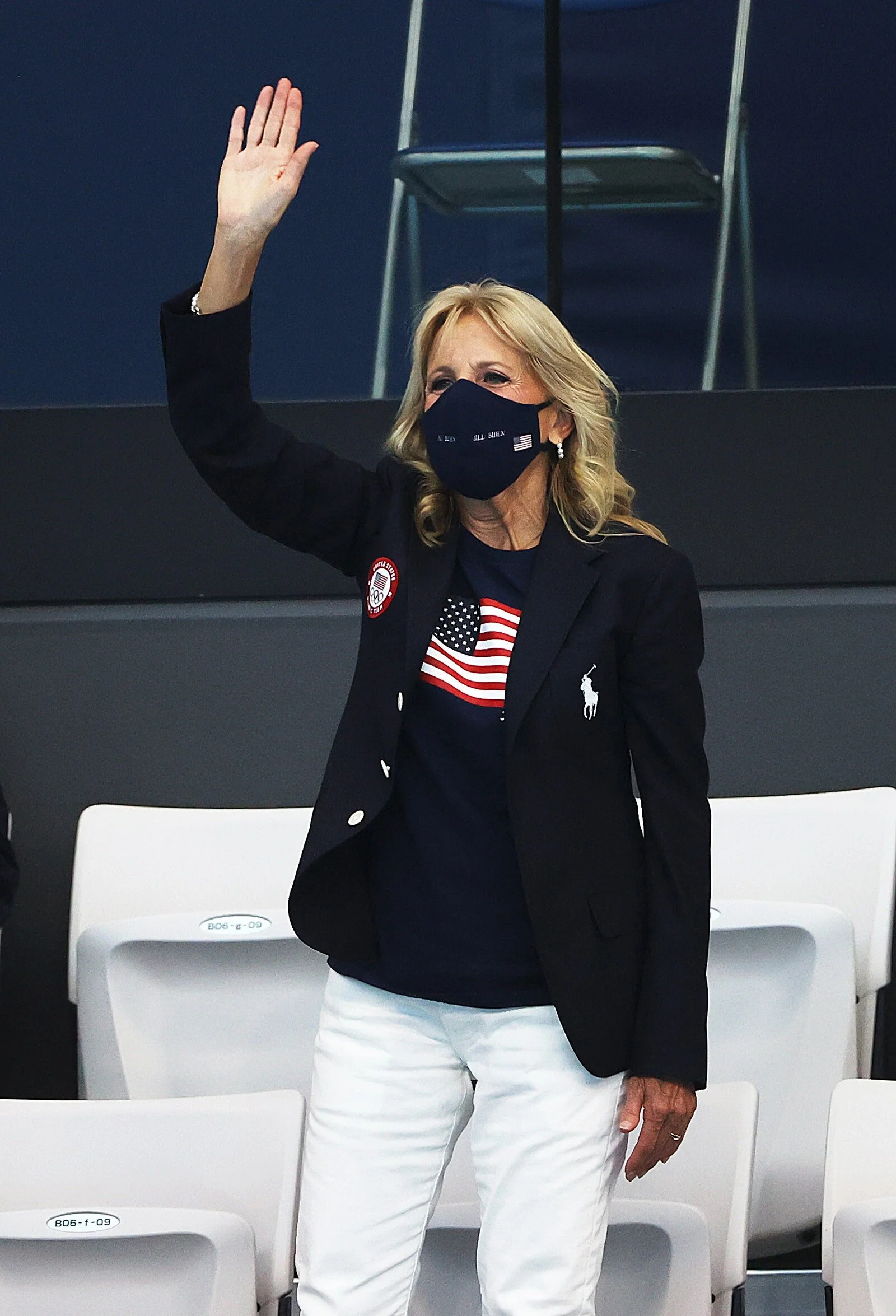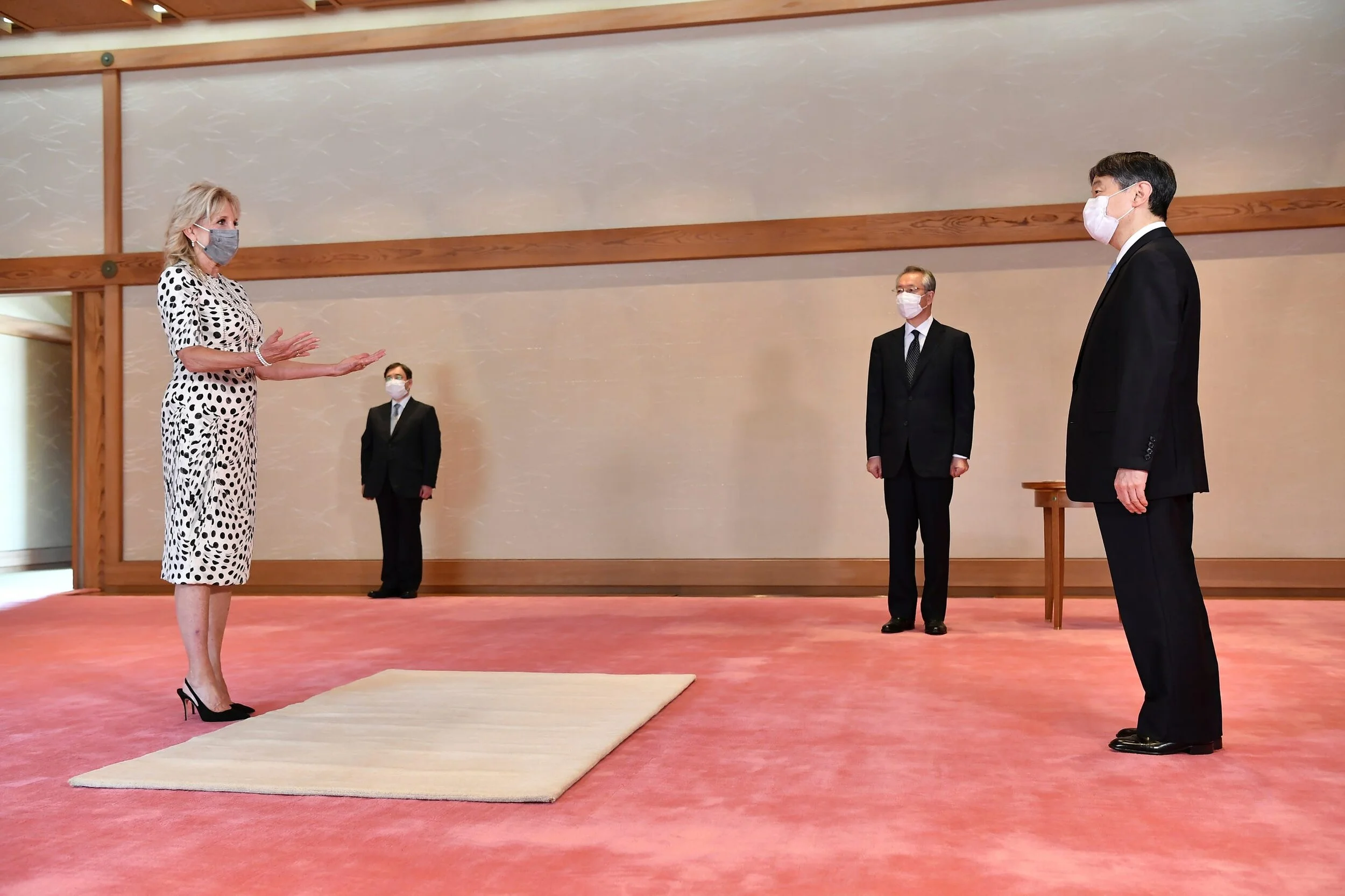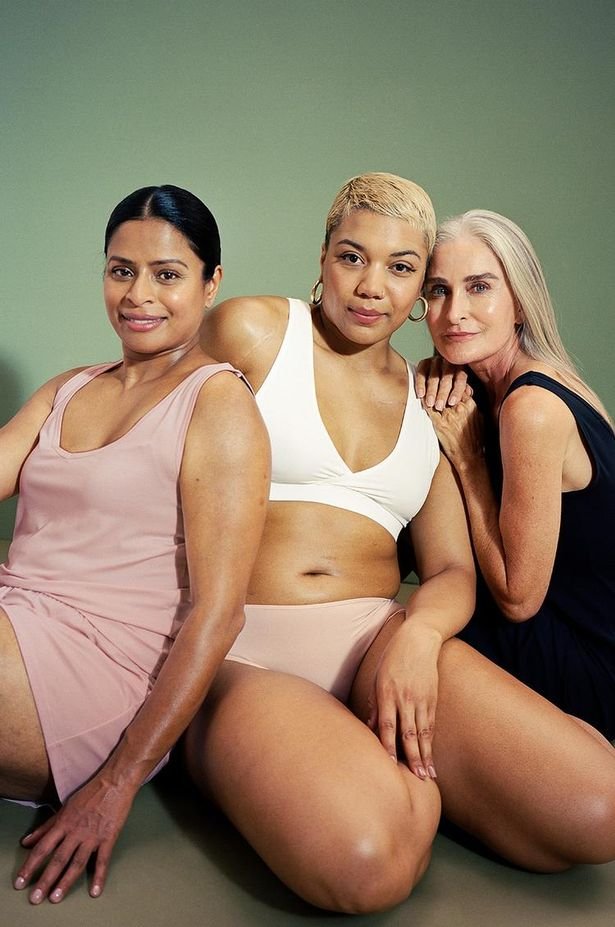Jill Biden Changes the Game
6 minute read
It’s true, secondhand fashion is great for people’s pockets and the planet, but even so, we don’t expect a First Lady to practice this particular sartorial message being preached. After all, Dr Jill Biden is one of the most-watched women in the world, and as such she has every designer with an ounce of ambition jostling to dress her. The sartorial opportunities this role affords are enjoyed only by royal families and could cajole even the most conscientious among us to park our principles and enjoy the spoils of the finest fashion houses in the world. Nobody would think the worst of Dr Biden for championing the fashion sustainability issue with stirring speeches and innovative initiatives rather than through her own working wardrobe.
Yet on her first solo trip this week, leading the US delegation to the Tokyo Olympics, the First Lady wore only one new item of clothing; a Ralph Lauren navy blazer, which was in fact part of the US Olympic team’s uniform. Everything else, she’d already worn to past public events. For each one of her predecessors, such a high-profile overseas event would have involved a roll call of American and Japanese designers, as the President’s wife used her intensely scrutinised image as a way of championing homegrown design and demonstrating a respect for her host country’s sartorial traditions. But Biden has bravely stepped away from this tried-and-tested formula, presenting a fresh agenda for a new administration and a modern, post-pandemic world.
Of course, timing is everything. Vanessa Friedman of The New York Times described in a 2017 article how Michelle Obama’s wardrobe during her two terms as First Lady reflected the agenda of her husband’s presidency. “Mrs Obama understood that fashion was a means to create an identity for an administration.” Friedman described Mrs Obama’s clothes as being about “the melting pot and the establishment; the 1 percent and the accessible.” Her choice of J. Crew alongside Jason Wu embodied the message of diversity and equal opportunity, which the Obama presidency stood for. What Mrs Obama wore and how she styled it was itself a departure from traditional First Lady fashion choices (usually conservative suits in pastel shades) and expressed sartorially the mandate of change that the Obama campaign promised.
Similarly, Dr Biden’s fashion choices communicate the concerns and objectives of the current administration; climate change for one. After four years of Trump’s willful ignorance, which included the US’s withdrawal from the Paris climate agreement, President Biden has put the issue front and centre of both his domestic and foreign policy. Dr Biden’s decision to rewear clothes in Tokyo specifically, is also in keeping with the nature of this year’s Olympic Games, which have a mission statement of “Be better, together – For the planet and the people.” If fashion’s function is to reflect the world and provide clues to an individual’s identity, then Dr Biden is, so far, doing just as good a job as Mrs Obama did.
The sartorial choices people in power make resonate, and sustainability is being pushed from the periphery of our consciousness to the forefront of our day-to-day decision-making process, not just by Dr Biden but by other women in the public eye too.
On the day of her wedding to British Prime Minister Boris Johnson, Carrie Symonds wore a wedding dress rented from My Wardrobe HQ. It cost her £45. In an interview with The Guardian, Sacha Newall, founder of My Wardrobe, revealed: “Carrie has always rented from us…[she’s] a regular customer.”
Of course, there are still some who would feel that it makes no sense to rent an item of clothing for fifty quid when you can own a dress from Zara for the same price. This is where platforms like Nuw, founded by Malahide-born, London-based Aisling Byrne, are pushing the sustainability boundaries. Nuw is built on a subscription model (£8 a month or £35 for one year) and membership provides access to a community of women and their wardrobes. Members upload images of good-quality but under-used items of clothing, then share, wear, clean and return. Users have no rental fee to pay, only the cost of posting their item, so the membership fee covers every item you choose for the entire month or year. Apart from being excellent value, this makes the whole process feel less transactional and more like a fun swap shop. And there’s an additional feel-good factor to this platform, as it includes an impact calculator app, which allows users to track the carbon, waste and water offset created each time they make a swap.
Of course, the dry-cleaning and transport aspects of rental and swap shops have a carbon impact, but they are still more circular options than buying brand new.
According to Longford native Anne-Marie Tomchak, former digital director of British Vogue, “The most sustainable item of clothing is the one that’s already in your wardrobe.”
Earlier this year, the sustainability advocate founded Sharejoy, a not-for-profit platform that supports mental health by encouraging women to sell their clothes on Depop and donate the profits to Pieta House. More recently she set up the innovative DesignTracker, a for-profit company that will monitor, report on and index companies’ green credentials, as well as consult with organisations wishing to improve their status in this tricky-to-navigate space.
Tomchak describes Dr Biden’s decision to rewear clothes on a global stage as “revolutionary”. She adds: “Dr Biden is using her platform to send a really strong message about how we perceive and value clothes. I would go so far as to characterise it as a positive disruption of throwaway culture.” The 37-year-old also makes a very good point about the cool factor that now surrounds sustainable fashion. “Having a revolving wardrobe of items that literally cost the earth isn’t the best look anymore, and that concept is becoming more widely recognised. For example, more celebrities are re-wearing their red carpet looks and getting involved in the climate agenda,” she explains.
It can only help the sustainability cause that there’s now real kudos attached to re-wearing, renting and buying pre-loved clothes, and it could signal that we’re nearing the tipping point, that magic moment when an idea crosses a threshold, tips and spreads like wildfire. As Malcolm Gladwell, the man who coined the term tipping point, said: “Look at the world around you. It may seem like an immovable, implacable place. It is not. With the slightest push – in just the right place – it can be tipped.”
Tomchak believes, though, that eco-friendly celebrities and improved lifestyle choices by consumers won’t be enough to force this tipping point without the participation of government and industry. She insists “it’s not possible to pin the responsibility on consumers to fix [this problem]. We’ll only really see widespread transformation of the fashion industry through laws and regulations.” And the best way for legislators and corporations to embrace and support the climate agenda? I’ll quote Gladwell again. “The key to good decision making is not knowledge. It is understanding. We are swimming in the former. We are desperately lacking in the latter.”
That’s advice we could all take on board.
Marie Kelly, July 2021
what do you think?Tell us in the comments below…
join the conversation
share and comment below, we’d love to hear your thoughts…












